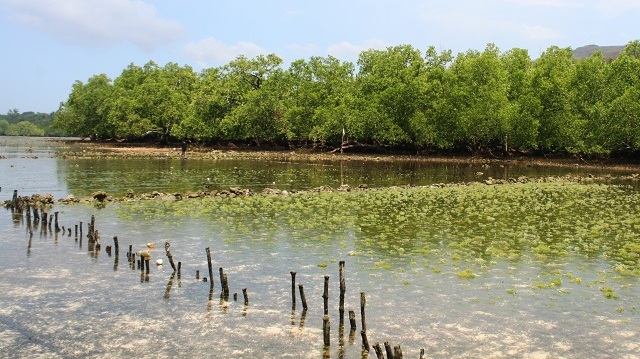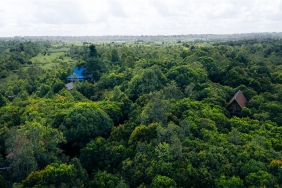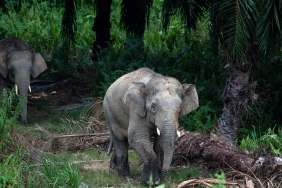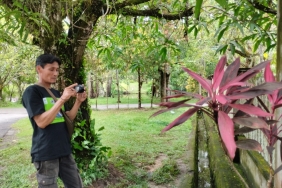MANGROVES ARE THE FUTURE GUARDIANS OF JAVAN RHINO HABITAT
The Javan rhino (Rhinoceros sondaicus) can now only be found in Ujung Kulon National Park. Ujung Kulon National Park is the last home of the Javan Rhino in the world. As a single habitat with 68 individuals, preserving this animal's habitat is one of the priorities in Javan Rhino conservation efforts.
Various efforts have been made by both the National Park and several civil society organizations related to rhino conservation, including by WWF-Indonesia Ujung Kulon Program. Mangrove rehabilitation activities that have been carried out by WWF-Indonesia, Ujung Kulon Program in collaboration with PT BCA Tbk. and Ujung Kulon National Park are one of the efforts in preserving the habitat of Javan Rhinos. Why the mangrove rehabilitation program?
The mangrove rehabilitation program is focused on mangrove areas that connect the habitat of Javan Rhinos. It is feared that the threat of abrasion and natural disasters such as tsunamis could disconnect the Javan Rhino habitat. If this connection is broken, it will result in two populations of Javan Rhinos. The existence of these two populations can reduce the range of Javan Rhinos so that it can cause genetic decline of Javan Rhinos, inhibit mating for the development of healthy populations so that it can lead to extinction. Mangroves, which are well known as abrasion barriers, are needed in this area. Therefore, a mangrove rehabilitation program through the NEWTRees program was carried out as an effort to preserve the habitat and population of Javan Rhinos.
Mangrove rehabilitation activities have been initiated since 2017. This mangrove rehabilitation program is not only one of the efforts in Javan Rhino conservation but also provides a new discourse for the community in the Ujung Kulon National Park Buffer Village to be directly involved and able to implement the mangrove rehabilitation program.
The Bayawak and Compilation groups, local communities in Ujungjaya Village, one of the buffer villages of Ujung Kulon National Park and the closest village to the mangrove rehabilitation site, are actively involved in mangrove nursery, planting, and maintenance. The Ujung Kulon National Park Office is also very supportive of these two groups in carrying out mangrove rehabilitation activities. Thus, in addition to maintaining the connectivity of Javan Rhino habitat, this program also has a social impact to invite parties not only in the National Park Buffer to participate in environmental improvement and preservation of Javan Rhino habitat.
Certainly in carrying out mangrove rehabilitation, the team did not go through a smooth process, some challenges were also faced. There were deaths of the planted mangroves due to natural factors such as west and east monsoon currents, natural disasters, and centipede pests. The team also faced some difficulties in obtaining seeds that could be propagated and planted. Several efforts such as capacity building related to mangrove planting, monitoring, and maintenance continue to be undertaken and pursued by the team. Through several studies and the tireless efforts of the mangrove rehabilitation team, one by one these problems were alleviated by the team.
Through the hard work of the team and the parties involved, it is hoped that in the future mangroves can grow well so that they can become the guardian of the Javan Rhino habitat and also become a source of life for the people around Ujung Kulon National Park.





